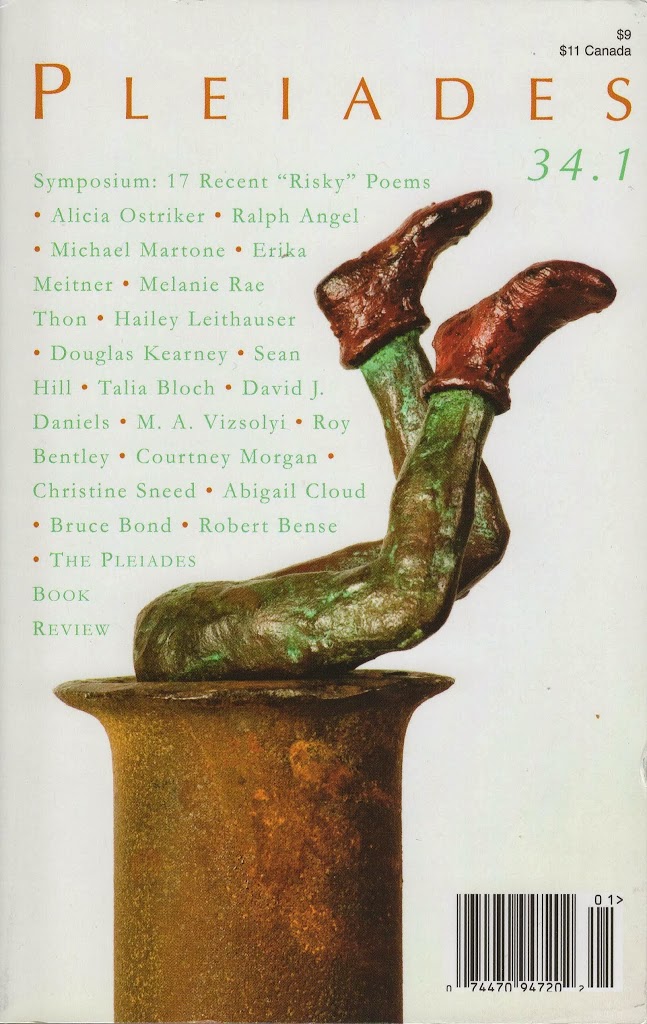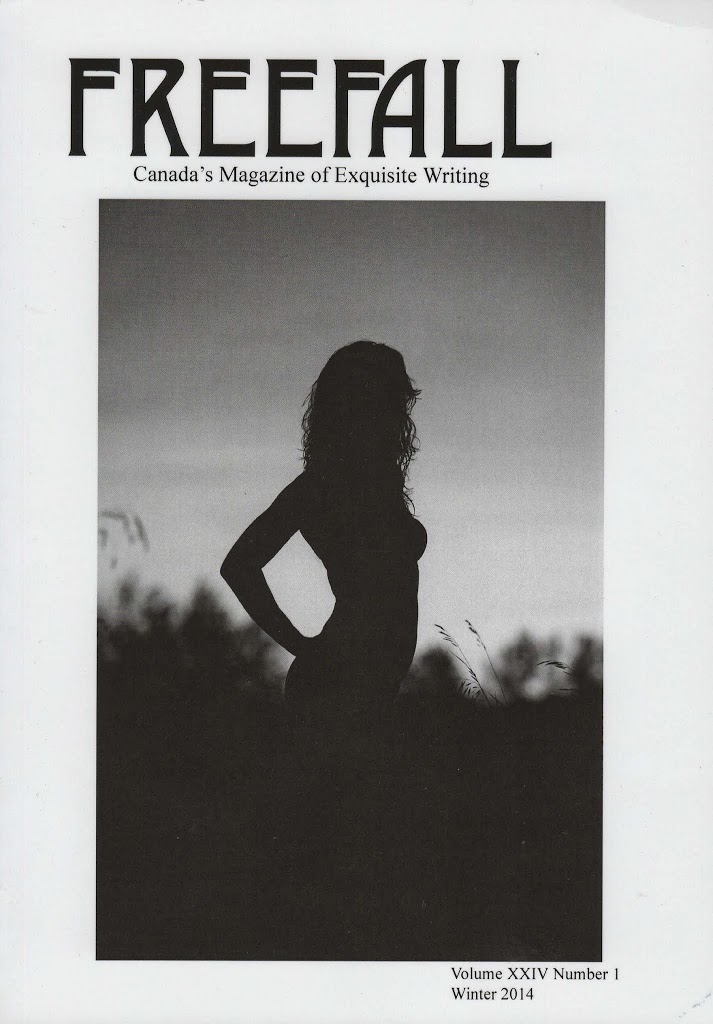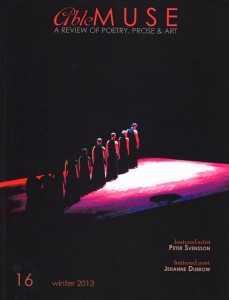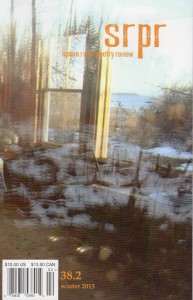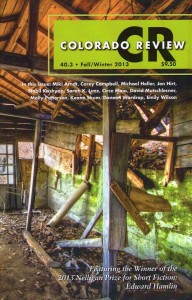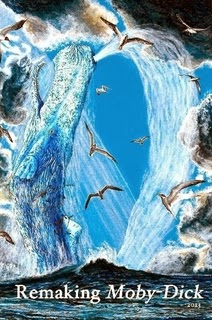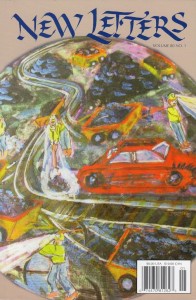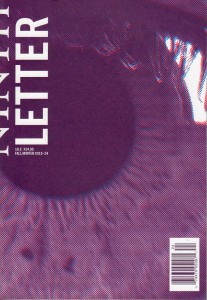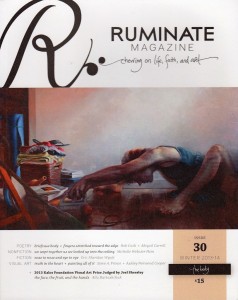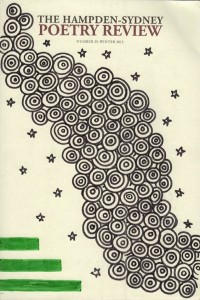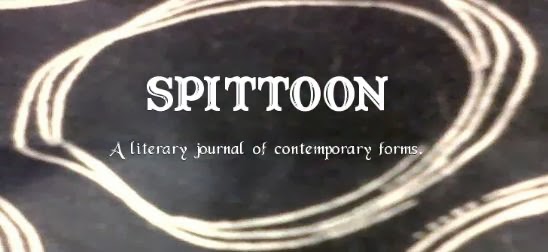Even if you were only half-awake in the late ’80s and early ’90s and only occasionally watched prime-time shows on ABC, you may remember the nostalgic narrator of The Wonder Years and the young urban professionals in thirtysomething, which sparked the now-commonplace term and later earned a place in the Oxford English Dictionary. Both shows were framed in the imagination of baby boomers, the Clinton-Gore age group back in 1992 whose childhood memories of Sixties counterculture now feels muted, ironed out into designer suits and body language that secure career paths and retirement plans. You might get a whiff of those two shows in Joshua Isard’s Conquistador of the Useless, through the tone of nostalgia for one’s teenage years that, to some extent, acts as an element of restraint and caution about being pulled too fast into an upwardly mobile career in information technology. The narratives of urban alienation in Pearl Jam, Kurt Cobain, MTV’s Daria, and Kurt Vonnegut are not mere artifacts in Nathan Wavelsky’s suburban world, but serve as imaginary sticky notes for a life filled with statistical reports, deadlines, and board meetings. Thus, Nathan accepts a big job promotion with trepidation and, knowing the ball is in his court, requests a few months off for something unrelated to his career: his condition for accepting the offer is that he starts working in his new job after climbing Mt. Everest. Continue reading “Conquistador of the Useless”
NewPages Blog
At the NewPages Blog readers and writers can catch up with their favorite literary and alternative magazines, independent and university presses, creative writing programs, and writing and literary events. Find new books, new issue announcements, contest winners, and so much more!
Conquistador of the Useless
Spread the word!
Malignant
It’s impossible to do justice to the breadth of literature that surrounds cancer. We can view cancer in a historical context through works like Siddhartha Mukherjee’s The Emperor of All Maladies. We can read reflections from the medical community in Atul Gawande’s Complications. We can see literature through the decades—like Death Be Not Proud—take on the question of how to balance art and science in practicing medicine and what might determine what we would call “good medicine.” Countless examples shape how we, as a culture, think about and make sense of cancer. And at the forefront of all cancer genres is the personal anecdote: the story of experiencing cancer either firsthand or through a family member or friend. Malignant: How Cancer Becomes Us, by S. Lochlann Jain, takes the jumbled milieu of medicine, anthropology, culture, and history and tells us how we (broadly defined) think about cancer through the lens of her experience with it. Continue reading “Malignant”
Spread the word!
There. Here.
The beautiful cover image for this book of poetry—a painting by an artist named Linda Okazaki—features an animal, probably a fox, alone on a bridge over a vast expanse of water, with trees and mountains in the distance under an orange-red sky. There is a mythical quality to this painting that matches the energy of the best poems in Stan Sanvel Rubin’s There. Here. In this fourth full-length book by Rubin, I find an author who sometimes muses about life in direct, observant narratives and, at other times, offers images with the compression of Zen koans. Continue reading “There. Here.”
Spread the word!
Scratching the Ghost
Scratching the Ghost is Dexter L. Booth’s first full-length book, though he has been published in a variety of literary magazines; this manuscript was the winner of the 2012 Cave Canem Poetry Prize. From the first stanza to the very last, I found myself reading like I had an addiction to his prose, and I just couldn’t put the book down. The beginning to one of his Abstracts:
Mouths foaming
like a scar after
the sweet kiss
of peroxide.
Spread the word!
Folsom’s 93
The backstory of Folsom’s 93: The Lives and Crimes of Folsom Prison’s Executed Men would make a pretty good book of its own. Author April Moore’s great-great-aunt Betty, a “fiery redhead” who worked in Los Angles nightclubs, was married to Tom, a professional gambler and bookie with ties to LA and Las Vegas crime syndicates. If that wasn’t enough to keep family phone lines and dinner conversations buzzing, Tom had photos and dossiers of all 93 men executed at Folsom Prison between 1895 to 1937. Why he had them is a mystery; they came into his possession following a visit to the prison to collect a debt from a prisoner. After Betty’s death, the author acquired, as her grandfather labeled them, “the ugly mugs.” Moore follows this irresistible film noir of an introduction with straightforward accounts of how the condemned went to the gallows. Continue reading “Folsom’s 93”
Spread the word!
Fannie + Freddie
Poetry is often viewed as a respite from the noise and violence of the “real world.” A podcast that paused to lament the anti-intellectual culture of American politics talked of a book of poetry at a president’s bedside in the same breath as vacation and exercise. These things are necessary, or productive even, but not of the same world. Continue reading “Fannie + Freddie”
Spread the word!
Glimmer Train November Short Story Award for New Writers Winners
Glimmer Train has just chosen the winning stories for their November Short Story Award for New Writers. This competition is held quarterly and is open to all writers whose fiction has not appeared in a print publication with a circulation greater than 5000. The next Short Story Award competition will take place in February. Glimmer Train’s monthly submission calendar may be viewed here.
 1st place goes to Natasha Tamate Weiss [Pictured. No photo credit.] of San Francisco, CA. She wins $1500 for “What It Means to Rush” and her story will be published in Issue 93 of Glimmer Train Stories. This is Natasha’s first published fiction.
1st place goes to Natasha Tamate Weiss [Pictured. No photo credit.] of San Francisco, CA. She wins $1500 for “What It Means to Rush” and her story will be published in Issue 93 of Glimmer Train Stories. This is Natasha’s first published fiction.
2nd place goes to Amy Evans Brown of Kalamazoo, MI. She wins $500 for “The Hudson.”
3rd place goes to Gabe Herron of Scappoose, OR. He wins $300 for “Uriah.”
A PDF of the Top 25 winners can be found here.
Spread the word!
Symposium on Poetic “Risk”
The latest issue of Pleiades puts forth a special Symposium on Poetic “Risk” in which poets and critics have been invited to select a recent poem that is “risky” and write a short essay about why. In the introduction to the section, the editors say that 10 or 15 years ago, risk in poetry was a big topic, but now there has been less discussion of it. “We found ourselves wondering: Has the idea of ‘risk’ in poetry been somehow rendered obsolete? Is it now considered a less important poetic value than it once was? Are there new and exciting ways that poets are currently taking risks in their works? Are the risks of poetry actually quite constant and old?”
Contributors to this section include Robert Archambeau, Rae Armantrout, Jaswinder Bolina, Victoria Chang, Heather Christle, martha Collins, Carl Dennis, John Gallaher, Tony Hoagland, Cathy Park Hong, Joan Houlihan, Joy Katz, John Koethe, Randall Mann, Adrian Matejka, and Rusty Morrison.
Spread the word!
Sharon Drummond Chapbook Prize
FreeFall‘s latest issue features the poetry of Angela Simmons, winner of the Sharon Drummond Chapbook Prize. This prize was established in 2013 in memory of the Calgary poet Sharon Drummond and honors Alberta-based writers who have never before published a collection of poetry. Angela Simmons received a contract with Rubicon Press to publish her work in an edited chapbook. The issue includes several selections from this chapbook.
Spread the word!
2013 Write Prize for Poetry
Able Muse‘s Winter 2013 issue announces and includes the winners of the 2013 Write Prize for Poetry:
Winner
D.R. Goodman: “The Face of Things”
Second Place
Jeanne Wagner: “The Unfaithful Shepherd”
Third Place
Richard Wakefield: “Keepaway”
Finalists
D.R. Goodman: “Our Late in Summer”
Tara Tatum: “The Nut House”
D.R. Goodman: “A Red-Tailed Hawk Patrols”
Anna M. Evans: “Prague Spring”
Melissa Balmain: “Two Julys”
Spread the word!
Fractured West’s Final Issue
Fractured West, which announced some time ago that it would be ceasing publication, has come out with their fifth and final issue. Here’s all about it:
“Issue 5 is about endings and beginnings, the world after the world is over. In futuristic stories debris cascades back to earth from outer space while humans and animals run wild together; in personal stories relationships self-destruct and are reborn. Whatever else happens, people slip from life to death with freedom and hope for something more.
A theme of ending and renewal is appropriate for what will be our final issue. It has been a wonderful five years, full of unexpected stories and characters that will stay with us for years to come. As we both move on to new stages in our lives we hope the writing that we’ve published in Fractured West will stay with you too, reminding you to catch those glimpses of magic whenever and however they flash by.”
Spread the word!
SRPR Contest Winners
SRPR (Spoon River Poetry Review)‘s Editors’ Prize 2013 Contest winners are announced and published in the latest issue:
First Place ($1000)
Jesse Nissim, “Fire”
First Runner Up ($100)
Dante Di Stefano, “Praying to Ares After Listening to My Father’s Voice Message”
Second Runner Up ($100)
Carol Matos, “Goodbye Charlie”
Honorable Mentions
Leland James, “A Brief History of the Electric Chair”
Susan Charkes, “Conveyance”
Michael Sukach, “Poetry Critic: a Found Pastoral”
Arne Weingart, “Parenthetical”
Spread the word!
2013 Nelligan Prize for Short Fiction
The Colorado Review‘s latest issue features the winner of the 2013 Nelligan Prize for Short Fiction, the prize’s 10th anniversary. Judge Jim Shepard selected Edward Hamlin’s “Night in Erg Chebbi” as the winning piece. Editor Stephanie G’Schwind writes that it is a “hauntingly beautiful story.” And Shepard writes that it “deftly deploys the kind of flyblow and faintly absurd exoticism shot through with menace that was Paul Bowles’s specialty, but the observational intelligence of its portrait of a loving but exhausted couple at the end of their tether is all its own, and both its sense of place and its pained compassion are arresting.” To read more about the prize, click here.
Also featured in this issue are Miki Arndt, Corey Campbell, Molly Patterson, Jen Hirt, Keane Shum, Sarah K. Lenz, Karen Leona Anderson, Mario Chard, Mark Conway, Robert Dannenberg, K.A. Hays, Michael Heller, Nabil Kashyap, and more.
Spread the word!
Melville Fans :: Remaking Moby-Dick
“The Re-Making Moby-Dick project is an international multimodal storytelling performance instigated and enacted during 2013 to 2018. Poets, writers, artists, schoolchildren, scholars, dancers, curators, and sailors are invited to engage the project and participate via the means most natural to their expressive practice. The 135 chapters, along with the extracts, inscription, epigraph, and epilogue, of Herman Melville’s 1851 novel serve as prompts for responsive work created in multiple forms, recorded in digital video and exhibited online.”
Curator Trish Harris and Project Director Lissa Holloway-Attaway have completed the compilation and a participatory video screening that took place at the the Blekinge Museum in Karlskrona, Sweden during the Mixing Realities Digital Performance Festival in May 2013: “The festival foregrounded mixed reality works presented by scholars, curators, and International artists working across media (in sound, video, augmented reality, digital and live performance, dance).” The YouTube channel for the videos is still available, as well as this compilation of the 24 hour MobyReading Marathon.
Trish and Lissa have also repurposed and re-contextualized the project artifacts, offering yet another “text” published online and in print form that can be shared with a wider audience, along with the original work from the festival, as a further extension of the project. The online version includes QR codes for audio/video content.
It doesn’t stop there – Trish and Lissa are collecting and curating new video so to screen a more-complete Remaking Moby in both Europe and the U.S. in 2014.
Although submissions are now closed, you can still participate by responding to “specific to separate chapters or passages in Moby-Dick or critically interpret some aspect of the novel, extending the meaning and significance of Moby-Dick and reflecting on its continued relevance. The full text of Moby-Dick is available at Project Gutenberg. Chapter synopses are available at Novel Guide.”
For more information, visit Re-Making Moby-Dick.
Spread the word!
Readers’ Favorites from New Letters
In the latest issue of New Letters, they announce the readers favorites for Volume 19 Issues 1-4, 2012-2013:
Readers Award for Fiction
Douglas Trevor: “Slugger and the Fat Man”
Readers Award for Poetry
Claudia Serea: “My Father’s Quiet Friends in Prison, 1958-1962”
Readers Award for the Essay
Walter Cummins: “Roth’s Complaint”
Spread the word!
First Annual Federico Garcia Lorca Poetry Prize Winners
Green Briar Review held its first annual Federico Garcia Lorca Poetry Prize judged by Sean Thomas Dougherty, who notes, “In judging the poems submitted for this contest, I looked foremost at language on the level of the line. This was the difference in deciding which poems were most successful. Then at meaning, then at guts. It was this last one that showed some poems were just braver emotionally than others.”
Dougherty selected the top three poems and then ten Honorable Mentions. Each of the three Green Briar Review editors then selected one poem from those ten for publication.
First Prize
What the Other Eye Sees
Christina Clark
Second Prize
Whiteness
Cary Waterman
Third Prize
Tattoos and Birthmarks
Patrice Melnick
Honorable Mention Editors’ Pick
Spiders and Big Gear Talk
Harlow Crandall
Tearing Down the Horseshoe & Star
Gentris L. Jointe
O Dochartaig, Ar nDutcas
Kevin Dougherty
Honorable Mentions
April Aubade
Richard Foerster
Soledad
Monica Teresa Ortiz
Cake
Trish Harris
Tarke al Yayeb Mohamed Bouazizi
Josh Gage
Lilacs
Mary Golias
Break On Through
Jeanne Sirotkin Haynes
State Park
Abigail Chiaramonte
Spread the word!
Ninth Letter in 3D
The only thing not surprising about Ninth Letter is that it is always surprising. The latest issue comes with a pair of disposable 3D glasses. But careful where you put them, you’ll want them to view the cover, design, and artwork throughout (though I’d recommend taking them off for reading purposes). The issue also holds large, foldout portfolios of artwork.
Included is the winners of the 2013 Literary Awards:
Poetry winner
R. A. Villanueva, for his poems “Aftermaths” and “Sacrum”
Fiction winner
Caitlin O’Neill, for her story “The Change Over Day”
Creative Nonfiction winner
Jessica Wilbanks, for her essay “On the Far Side of the Fire”
Literature in Translation
Eleanor Goodman, for her translation of excerpts from Shen Wei’s A Dictionary of Xinjiang
Other honors accorded by the judges include:
G. C. Waldrep selected “Three Expressions of El Tio” and “Five Characteristics of the Genus Tragelaphus” by Zoey Farber as the Runner Up entry in poetry
Alexis Levitin selected Olga Nikolova’s translations of “A Birthday Between Two Seas,” “A Formula for Infinity,” and “Toast” by Krasimira Zafirova’s as the Runner Up entry up in translation
Margot Livesey named “Pinprick” by Christie Heinrichs, “Charcoal” by Rachel Unkefer, and “Here Where the World Is Greening” by Rachel May as Honorable Mentions in fiction.
Spread the word!
Screen Reading :: Online Lit Mag Reviews!
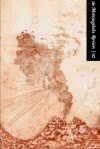 Exclusive to NewPages, Screen Reading is a regular column of reviews of current online literary magazines. This month, Reviewer Kirstin McIlvenna takes a look at Agave Magazine, Alimentum, Apogee, FictionNow, and The Monogahela Review. Brief but critical, these reviews shine the light on great online reading. NewPages: Good Reading Starts Here!
Exclusive to NewPages, Screen Reading is a regular column of reviews of current online literary magazines. This month, Reviewer Kirstin McIlvenna takes a look at Agave Magazine, Alimentum, Apogee, FictionNow, and The Monogahela Review. Brief but critical, these reviews shine the light on great online reading. NewPages: Good Reading Starts Here!
Spread the word!
2013 Kalos Foundation Visual Art Prize
Ruminate‘s 30th issue features the winner of the 2013 Kalos Foundation Visual Art Prize, which was judged by Joel Sheesley and sponsored by the Kalos Foundation. Sheesley writes about the winning piece by Alla Bartoshchuk, “The human body is the empirical core in these paintings. By fixing states of being in deft representation of the body, Alla Bartoshchuk translates ethereal states into physical encounters. Thus psychological and emotional conditions are given an undeniable veracity, we feel them and know them as our own.” Here are the winners:
First Place
Alla Bartoshchuk
Second Place
Steve A. Prince
Honorable Mention
Ashley Norwood Cooper
Finalists
Robyn San Anderson
Jonathan Aumen
Rebecca Calhoun
John Chang
Jenne Giles
Susan Hart
Zacheriah Kramer
Janet McKenzie
Barry Motes
Sydney Sparrow
Krista Steinke
Melissa Weinman
Rachel Yurkovich
The artwork of the top three winners are featured on the cover and throughout the magazine.
Spread the word!
Original Artwork on Every Cover
The Hampden-Sydney Poetry Review‘s Winter 2013 issue is exciting, right from glancing at the cover. When I received the NewPages copy, I had to look closely. Is that Sharpie on the cover? I flipped right to the editor’s note, and saw this:
“And isn’t this, we could say, ‘uncontrollable’ element of art one of the things that makes it so indispensable? I think so. When we publish the magazine each year, it is no longer, literally, in our hands, but in the hands (and eyes and ears) of our subscribers and readers. To that end, this year’s cover is something rather unusual. Each copy of this issue has an individually illustrated cover. Some may be signed, others may be anonymous. The artists range from professional illustrators and visual artists to college students, to academics, to elementary art school teachers to elementary school students themselves. They’ve all been done in a the simple medium of a permanent marker or two . . .”
Nathaniel Perry goes on to say that just like you can’t control what will be on the cover of your copy, you can’t control how you will read or react to any of the poetry. But here are the writers you can expect to find in this issue: Claudia Emerson, Maria Hummel, Christopher Howell, Robert Wrigley, and more.
Spread the word!
Agave Magazine Summer/Fall 2013
Although, with most magazines, I’m drawn in mostly to the prose (as a personal reading preference), Agave’s first issue held such strong poetry that I couldn’t help moving from one to the next, eager to see what the next poem had to offer. Continue reading “Agave Magazine Summer/Fall 2013”
Spread the word!
Apogee – Spring 2013
Apogee, only now in its second issue, looks for “the writing and writers that sit at a distance from the mainstream,” and from what I’ve read, the editors hold up their end of the bargain. Continue reading “Apogee – Spring 2013”
Spread the word!
The Monongahela Review – Fall 2013
Go to The Monongahela Review’s website, and you won’t find out much about the journal by just browsing. Without much information or submission guidelines, you really have to read the journal to get to know it. Download the PDF or open it in Issuu, and get cozy. Continue reading “The Monongahela Review – Fall 2013”
Spread the word!
FictionNow – Summer 2013
FictionNow’s Summer 2013 issue boasts the stories of three writers: Henry W. Leung, Sarah McElwain, and Richard Smolev. Continue reading “FictionNow – Summer 2013”
Spread the word!
Alimentum – December 2013
Alimentum, a food journal, transitioned a little more than a year ago from a print biannual publication to an online monthly. Because it is now more frequent, it is unfortunately a bit smaller. There is one piece for each of the sections each month: fiction, nonfiction, poetry, featurettes, book reviews, recipe poems, eat and greet, art gallery, jukebox, food blog favs, and news. Continue reading “Alimentum – December 2013”
Spread the word!
Arcadia Literary Journal – Fall 2013
The Vietnam War, love affairs, a few ERs, a catastrophic case of acne and its scars: trauma and its aftermath are the subject of this issue of Arcadia, guest-edited by Benjamin Reed. Perhaps because of the nature of trauma, the dramatic and the weird take up a greater-than-usual proportion of the issue, but quieter and more quotidian disruptions are given their places, too. Despite the fragmenting and wounding effects of trauma, the work in this issue is accessible and gripping, at times sad but never depressing. Continue reading “Arcadia Literary Journal – Fall 2013”
Spread the word!
Black Warrior Review – Fall/Winter 2013
In order to commemorate its 40th anniversary, Black Warrior Review decided to focus on “time travel.” The pieces selected for this issue meet the aims of time travel in such interesting and intriguing ways, this is one journal you will want to make sure to read front to back. Continue reading “Black Warrior Review – Fall/Winter 2013”
Spread the word!
Free State Review – Summer 2013
This magazine hasn’t been reviewed before on NewPages, so remember that you heard it from me: Free State Review is great. It’s a pleasure to look at, hold, and read, and the writing is as fresh and consequential as a sun-drenched, below-zero day. Nobody’s just messing around. Even the contributors’ notes are little works of art. Continue reading “Free State Review – Summer 2013”
Spread the word!
Glimmer Train Stories – Winter 2014
One of Glimmer Train’s many claims to fame is its signature black-bordered cover, its distinctive logo title, and the always interesting art—this time, a drawing of curly-tailed pigs making their way home through winter-deadened wheat, erupting in curls from the snow like the animals’ tails. Perhaps the most significant claim to fame, however, is the magazine’s reputation for excellence. Selections from GT have appeared in nearly every annual anthology of “the best.” Its smart look, its dedication to literary fiction, and its consistent attention to the needs of writers reaching for their best, make this always a magazine to watch. This issue is no exception. Continue reading “Glimmer Train Stories – Winter 2014”
Spread the word!
Grain – Fall 2013
As I read this issue of Grain, a quarterly from Saskatoon, Saskatchewan, I kept flipping to the back to find out who the writer is: how was it possible that I had never heard of this person, and that person, and the editors who have eyes for such great, sensitive, and unassuming writing? With one story and poem after another, this issue of Grain made me miss my train stop on the way to work, gasp, and wonder. I’m very, very excited to have discovered it and now to tell you to read it, too. Continue reading “Grain – Fall 2013”
Spread the word!
The Greensboro Review – Fall 2013
The Greensboro Review has been around now for almost 50 years. Since the journal started up in 1965, it has developed an international reputation, meaning each issue plays host to the best work from both emerging and established writers. This issue is packed with work that seems to gravitate around feelings of longing and desire and the various ways these two emotions shape and impact our life. Every piece reaches out to touch the readers on a different level and engage them. Continue reading “The Greensboro Review – Fall 2013”
Spread the word!
The Idaho Review – 2013
This issue of The Idaho Review is a gem; it begins in glory and the energy never sags. From its whimsically sinister cover (Bill Carmen’s fabulist The Earialist), through its parchment endpapers and beautiful inner design, this issue bountifully rewards the reader’s full attention. Continue reading “The Idaho Review – 2013”
Spread the word!
Lumina – 2013
You will need a pen and paper for this one. Two columns. Two Nobel laureates. Two radically different approaches to prose. In the first column, we have Faulkner and the Gospel of John. In the second column, we have Hemingway and the architectural concept that form follows function. Many journals published today feature prose that ascribes to one camp more than the other. But Lumina seems to capture the two styles precisely down the middle. The balance is perfect: in the fiction column, we have three of each and two that cross camps. In the nonfiction column, we have twenty-five percent Faulkner, seventy-five percent Hemingway (which makes sense considering he was a journalist with a night job), one excellent satire, and one chiseled memoir of sex and acid in the 1980s. Continue reading “Lumina – 2013”
Spread the word!
A Narrow Fellow – October 2013
My heart leapt at the title of this poetry journal, at the thought of one of my favorite Emily Dickinson poems granted prominence in the title, promising readers a connection to this master. The poets granted space in this issue exhibit a level of skill bordering on Dickinson’s inimitable greatness, some stopping just short of poems that endure and take the breath away. Continue reading “A Narrow Fellow – October 2013”
Spread the word!
Southern Poetry Review – 2013
I am enamored of literary magazines devoted solely to poetry. I look forward to immersing myself in metaphor, surrendering to symbolism, and indulging in sensory imagery to my heart’s content. This issue of Southern Poetry Review delivers a compilation of poems of such craft and mastery that leaves me nearly speechless and most assuredly breathless. Continue reading “Southern Poetry Review – 2013”
Spread the word!
We Come Elemental
We Come Elemental is Tamiko Beyer’s first full-length book; her chapbook bough breaks was published by Meritage Press in 2011. While bough breaks focused primarily on “domestic” concepts (gender, sexuality, motherhood, adoption), We Come Elemental draws from the entire planet for its topics. Water comprises the framework by which these disparate subjects are connected, just as water serves to connect all life on Earth. Continue reading “We Come Elemental”
Spread the word!
Begin Empty-Handed
While the title of Gail Martin’s second collection of poetry, Begin Empty-Handed, calls to mind a state of lack, it also implies a readiness to be filled, an openness to whatever might come to hand. This tension between remaining unburdened and delightfully accepting whatever turns up runs throughout Martin’s poems, as they both critique and catalog the world through the eyes of a therapist, daughter, wife, and mother. Winner of the 2013 Perugia Press Prize, Begin Empty-Handed crackles with wit and humor even as it considers loss and questions of responsibility in poems that clip along with intensity. Continue reading “Begin Empty-Handed”
Spread the word!
The Bridge to Take When Things Get Serious
In her previous memoir, Miss New York Has Everything, Lori Jakiela—an adopted only child—wrote about leaving her childhood home in Pennsylvania to work as an international flight attendant based in New York City, hoping to fulfill her childhood dream of becoming a writer. Jakiela, who directs the writing program at The University of Pittsburgh-Greensburg and teaches in the MFA in Creative Writing program at Chatham University, writes here about the next phase of her life, after her father’s death and leaving New York City, her job, and her boyfriend to return to Pittsburgh and care for her ailing mother. Continue reading “The Bridge to Take When Things Get Serious”
Spread the word!
The Palace of Contemplating Departure
In her debut collection, The Palace of Contemplating Departure, Brynn Saito carries uncertainties and measures them out against the known and the unknown. Saito finds an enthralling voice for complex emotions about race, war, identity, scars, ghosts, family, and suffering. Her undeniable cultural identity is woven through the poems. Her parents are Japanese American and Korean American; their stories, of life during a time when being Asian was a liability in America, are retold here, while Saito’s own stories predominate throughout. She lets us get to know her in an equivocal way and then leaves us with a light hold of attachment and a fierce curiosity about meaning and significance. Continue reading “The Palace of Contemplating Departure”
Spread the word!
Twerk
Latasha Diggs is a writer you have to experience, not read. Twerk isn’t a book to toss into the back seat of your car “for later” or a read-a-poem-here-and-there collection. With each verse, she sparks your curiosity and lures you deeper and deeper with her unique craft. Continue reading “Twerk”
Spread the word!
A Motive for Disappearance
Ray Ragosta’s refreshing style of writing in A Motive for Disappearance prominently features sparse lines in what are typically short poems. Upon a second read-through of this book, a few lines from two of the pieces jumped out at me as Ragosta’s built-in description of his own work: “Their tales, a perfect infection of memory” and Continue reading “A Motive for Disappearance”
Spread the word!
Circling Back Home
What is home? Darcy Lipp-Acord asks. Is it in the prairies of South Dakota where she grew up? Or amidst the mountains of Montana where she attended college? Where does one truly ever belong? What is place? Lipp-Acord explores these and other timeless themes in Circling Back Home: A Plainswoman’s Journey. In a total of thirteen essays, written over ten years, Lipp-Acord wraps the reader up in the intimacy of her marital home, her childhood home, her husband’s ranch, and the lives of her children. Lipp-Acord grew up in Timber Lake, South Dakota, on a farm where three generations of her family have lived. She now lives on a ranch near the border of Montana and Wyoming with her husband, Shawn, and their six children. Continue reading “Circling Back Home”
Spread the word!
Coming Events (Collected Writings)
Coming Events promulgates a non-linear reading practice. The form and content of these “collected writings” challengingly swerve back and forth between critical essay, poetry, and personal essay. When considered as a whole, the book’s tendency toward a deliberative structure of concentricity enchants, as individual pieces loop back on each other in ellipsoidal, interchanging depths of reading. The slow reader, returning again and again to the book’s pages, is justly rewarded against the too-eager skimmer looking for quick buzz-words and easily identifiable markers. Continue reading “Coming Events (Collected Writings)”
Spread the word!
Dark March
Flesh-eating hagfish, blue bejeweled garages, animated art, and a moveable geography. Dark March: Stories for When the Rest of the World is Asleep is filled with stories where sandspits are sentient, seagulls are cutthroat, and character conscientiousness is invariably fleeting. These hyperbole-infused short stories infuse ordinary settings with magic and imagination—they give just enough detail to be anchored in a possible universe but contain enough impossibility to buoy the characters above the predictable. Colin Fleming’s collection is pithy and witty, and manages to walk an interesting line between absurd existentialism, surrealist fantasy, and magical realism. Continue reading “Dark March”
Spread the word!
Love Is Power or Something Like That
The characters in A. Igoni Barrett’s short story collection, Love Is Power or Something Like That, are linked to each other within the chaos and contrasts of Lagos, Nigeria in a nation cycling since the end of colonialism between democracy and dictatorship, reform and intractable corruption. They are dreamers and strivers who sometimes literally tumble into potholes of bad luck while living out the axiom that “no good deed goes unpunished.” The instinct to love is also part of the chain: a father struggling to save a sick infant daughter; a son trying to nourish a drunk, abusive mother; grandmothers who try to nurture neglected grandchildren; two feuding old women abandoned by long departed children who must rely on each other for mutual aid; cousins unable to resist an illicit attraction; a wife trying to placate a husband’s raging despair. Continue reading “Love Is Power or Something Like That”
Spread the word!
Happy Mutant Baby Pills
Just when you thought it was safe to move about the cabin, Jerry Stahl has unleashed a new novel. To the uninitiated, Happy Mutant Baby Pills has no exact genre except for Stahl himself. Continue reading “Happy Mutant Baby Pills”
Spread the word!
People on Sunday
Geoffrey G. O’Brien’s People on Sunday took me a long time to finish because his poems thrilled me so much. Many pieces in People on Sunday demand an immediate reread upon completing the final lines. Often O’Brien tucks clues, hints, and foreshadowing into his poems. These hints blossom with much more depth and meaning during the second (or third and sometimes fourth) read. My fingers could hardly turn the pages backward fast enough to satisfy my urge to devour some of these poems again. Continue reading “People on Sunday”
Spread the word!
Why We Drive
Microcosm Publishing’s Why We Drive: The Past, Present, and Future of Automobiles in America is an image-rich examination of the dominance of car culture in the United States. “I am an advocate for car-free cities, car-free city sections, and car-free living,” author/illustrator Andy Singer states within the first few introductory pages. The text proceeds from there, detailing the disadvantages of arranging urban and suburban life around cars rather than people. This is followed by a succinct history of highway politics in the United States, and Singer concludes with a call to action, offering suggestions for individuals who wish to live car-free and strategies for funneling more money into public transportation at the state level. Continue reading “Why We Drive”
Spread the word!
Best of Spittoon 2013 Awards
Spittoon is happy to announce their “best of” winners for 2013. For more information about the authors, and to read their selected pieces, click here.
Fiction
Patrick Kelling, “How to Teach Disgorgement”
Poetry
Theresa Sotto, “hippocampus–for etching and retrieving long-term memories”
Creative Nonfiction
Irene Turner, “The Lessons”
Spread the word!
Looking for Interns
Sundress Publications is looking to hire two interns, to start immediately. The two options are an editorial intern (to work with the Flaming Giblet Press imprint) or a web development intern (Sundress Publications). To find out more information and to apply, please click here.

